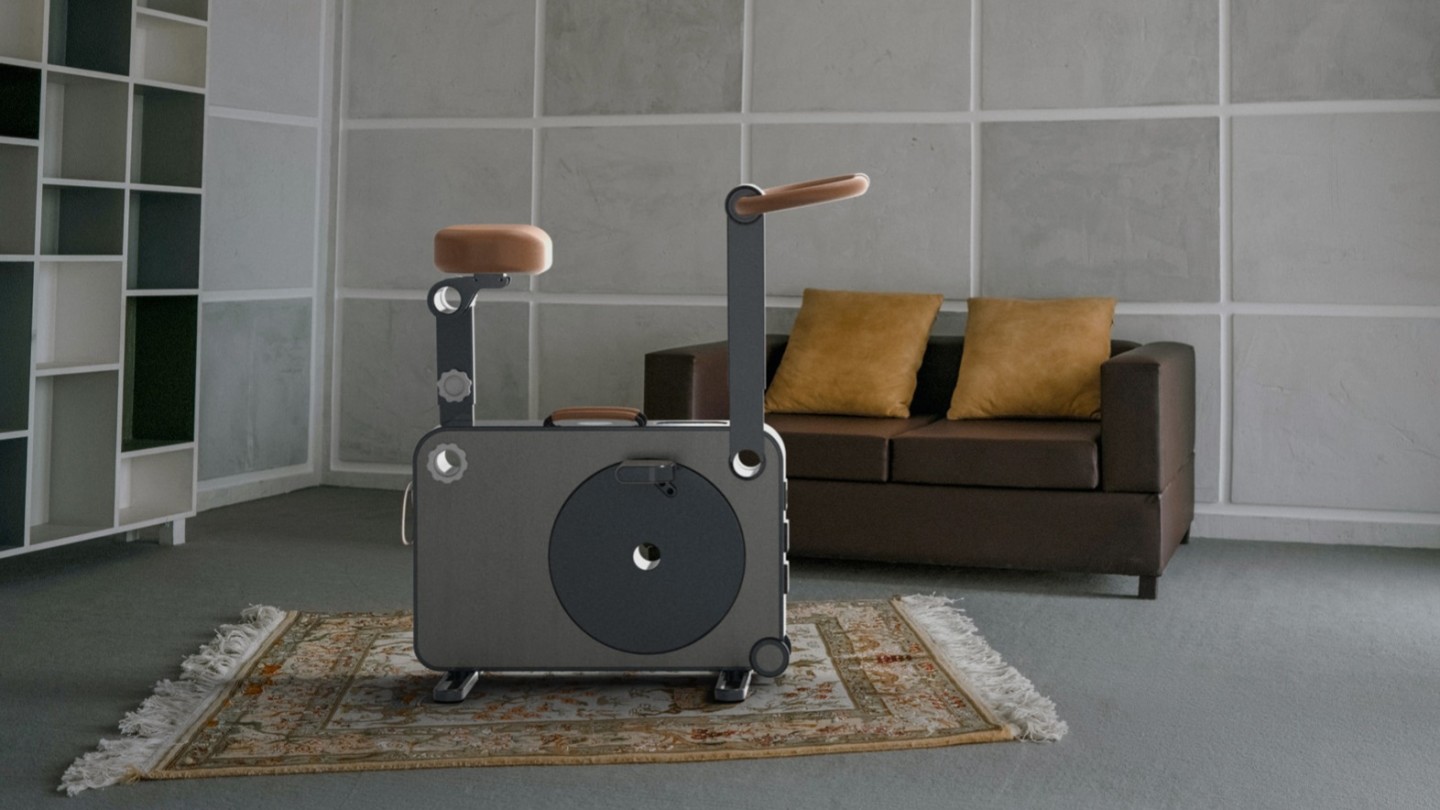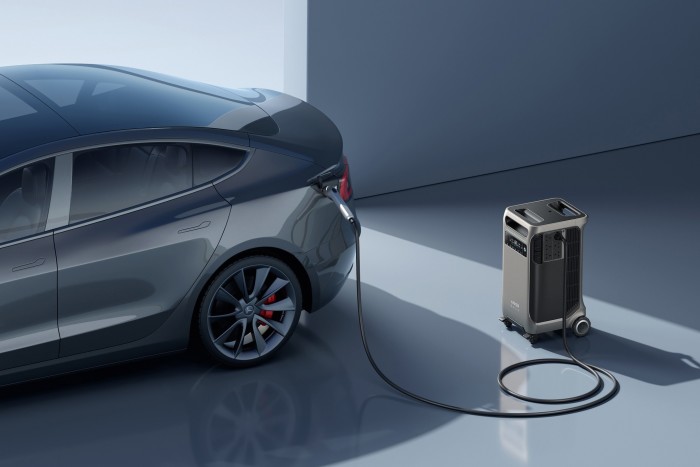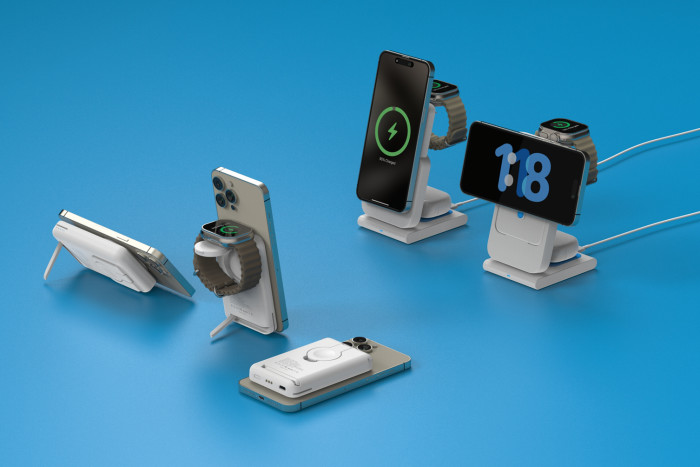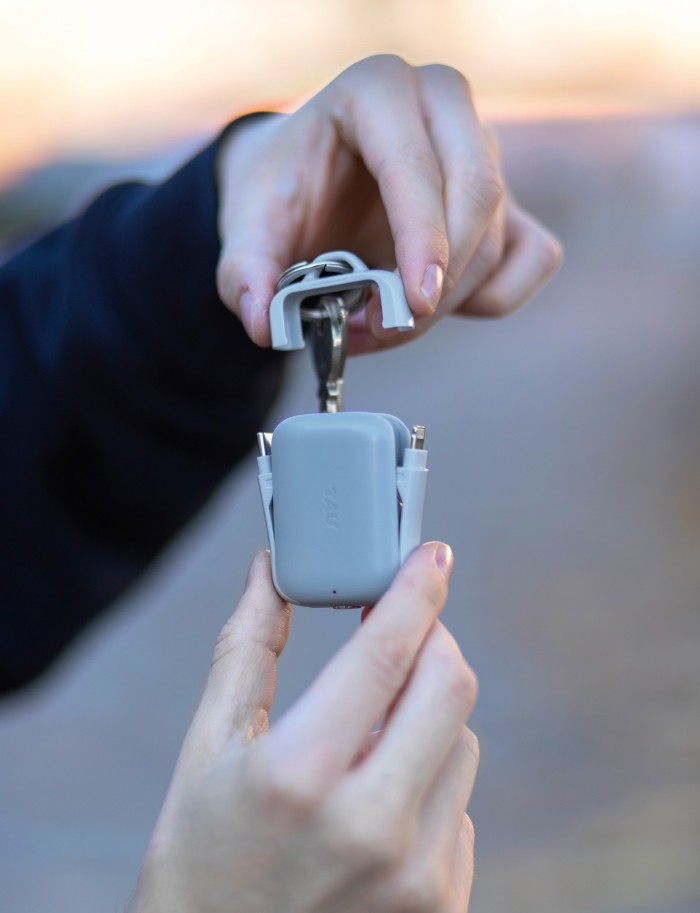New-gen power banks – for home or on the hoof

Roula Khalaf, Editor of the FT, selects her favourite stories in this weekly newsletter.
Pedal power
What do your legs have in common with the wind, the sun and nuclear fission? This wonderfully unusual bicycle provides us with a clue: they’re all potential sources of electrical power. Jonas Navickas, the owner of a Lithuanian logistics firm, had the idea after his family had taken in three children fleeing the war in Ukraine. “In Kyiv, 700km away, people were sitting in bomb shelters without electricity,” he says. “I had a house full of lively children, and I realised that there was power here.” He smiles. “Particularly if I gave them more sweets.”
HR Bank is, in essence, a power bank with AC, USB and wireless outlets that can be charged by pedalling. (HR, of course, stands for “human resources”, which Navickas sheepishly describes as “just a little joke”.) Its aesthetic, however, is somewhat detached from the standard exercise bike, with a chic, uniquely rectangular body, a range of luxury finishes and colourways and optional accessories including a detachable desk. “Because we’re all individual!” explains Navickas’s colleague, Aurelijus Jaškulis. “We recently had a meeting with a Lithuanian minister, and she kept looking at a white one with yellow pedals, saying, ‘Oh, this one is mine...’ Traditional bikes don’t fit in houses with beautiful interiors.”
The 2kWh battery (which can also be topped up from solar panels or the grid) is sufficient for five washing machine cycles, or to charge a smartphone 120 times over. What shouldn’t be overstated is the amount of energy one person can generate: it can take 12 hours to recharge an empty HR Bank by pedalling. “If you’re thinking that one person could provide light and heat for your home, that’s not true,” says Navickas. “But after one or two weeks of using it, you start turning off lights when you leave the room, switching off things that aren’t in use.”
Designed and built in a Vilnius workshop and self-funded to the tune of €2mn, HR Bank is a bold, beautiful statement about energy security and the value of power. Tukas EV HR Bank, from €2,557
The generator

From its smallest battery packs to this blackout-busting, suitcase-style unit, Anker’s power sources are among the best I’ve used: durable and reliable, with clear displays showing power transfer rates and energy remaining. The F3800, which scooped an innovation award at the recent CES in Las Vegas, has 3.8kWh of storage (expandable to 26.9kWh with up to six add-on battery packs) and 6,000W AC output – enough to keep appliances going on your RV, or even to power a house. It also supports electric vehicle charging. Whether you’re off-grid by choice or by accident, it’ll power whatever needs powering, and can be topped up via solar or mains. Anker SOLIX F3800 portable power station, $3,999
The solar cell

AC power doesn’t have to be bulky. This neat, characteristically orange package from Jackery comprises an Explorer 300 Plus station (weighing 5kg) complete with USB and AC ports, with a 40W solar panel (foldable down to laptop size) that, together, are eminently backpackable. The 288Wh battery is at the cutting edge of portable power: you can run a 50W device (such as a large fan) for four to five hours, or a 5W device (eg, a Wi-Fi router) for 10 times that. While the performance of the solar panel depends on how insipid the sunlight is, four hours of sun should fully charge the unit. (You can also charge via AC or a 12V car connector if it’s grey, or indeed dark.) Jackery Solar Generator 300 Plus, £399
The multiplug

OneAdaptr has a long history of coming up with neat ideas to keep international travellers fully juiced, and this is its latest, best and most flexible. At the heart is a 135W universal adaptor (that works in more than 200 countries) with four USB ports that can be used to charge anything you like. Then there’s a separate wireless charger, incorporating a detachable 10,000mAh power bank, giving you a whole bunch of options for charging MagSafe and non-MagSafe devices, including Apple Watches. Charge them while lying flat or vertical, via USB or wirelessly, regardless of whether or not you’re near mains power. Preposterously handy, verging on indispensable. OneAdaptr OneGoWorld135, £152
The key to life

Swiss-based Rolling Square describe themselves as tech minimalists, and are known primarily for their mini charging cables with hot-swappable plugs – a brilliant innovation in a world that’s taking its sweet time to transition to USB-C as standard. The TAU 2 is a mini power bank designed to live on your keyring and give you power when your smartphone battery is dangerously low. It only holds 2,000mAh, but that’s more than enough to get (say) an iPhone 15 Pro Max battery back into the green. USB-C, Lightning and Micro-USB connectors cover pretty much all bases, and a small charging dock gives you a new place to pop your keys at the end of the day. Rolling Square TAU 2, $39
Comments